CA6140车床滤油器体的加工工艺规程及夹具设计
CA6140车床滤油器体的加工工艺规程及钻进油孔斜φ11孔工艺装备设计
CA6140车床滤油器体的加工工艺及夹具设计
滤油器体的加工工艺规程及钻进油孔斜φ11孔夹具设计
滤油器体的加工工艺规程及夹具设计
CA6140车床滤油器体的加工工艺规程及钻进油孔斜φ11孔夹具设计【优秀】【工艺装备类】【word+10张CAD图纸】
【带外文翻译】【工艺过程、工序卡片全套】【38页@正文14800字】【详情如下】【需要咨询购买全套设计请加QQ1459919609】.bat
CA6140滤油器工序卡.doc
CA6140滤油器工艺卡.doc
CA6140车床滤油器体.dwg
CA6140车床滤油器体夹具设计【仅供参考】.ppt
外文翻译.doc
契形双翼套筒.dwg
工艺过程卡片.dwg
开口垫圈A4.dwg
快换钻套.dwg
斜孔夹具体.dwg
斜孔夹具装配图.dwg
正文.doc
毛坯.dwg
紧固螺钉A4.dwg
螺母A4.dwg
衬套A4.dwg
目录
序言1
一、 零件的分析及生产类型的确定1
1、 零件的作用1
2、零件的工艺分析1
3、零件的生产类型2
二、 零件毛坯的设计2
1、 选择毛坯2
2、 毛坯尺寸公差与机械加工余量的确定2
3、 确定毛坯尺寸3
4、 设计毛坯图4
三、 零件的加工工艺设计5
1、 定位基准的选择5
2、 零件表面加工方法的选择5
3、 拟订工艺路线6
4、工艺方案的比较与分析7
四、 工序设计8
1、 选择加工设备与工艺装备8
2、 确定工序尺寸10
3确定切削用量及基本时间12
4.数控加工工序31
四.夹具的设计32
1、工件的定位32
2、 夹紧装置34
3、 定位误差分析35
4、 对刀装置35
五、 设计小结36
参 考 文 献37
序言
综合模块(机制工艺及夹具)毕业设计是在学完了机械制造技术基础和大部分专业课,并进行了生产实习的基础上进行的又一个实践性教学环节。这次设计使我能综合运用机械制造技术基础中的基本理论,并结合生产实习中学到的实践知识,独立地分析和解决了零件机械制造工艺问题,设计了机床专用夹具这一典型的工艺装备,提高了结构设计能力,为今后的毕业设计及未来从事的工作打下了良好的基础。
这次毕业设计中,我所选的零件是“CA6140车床滤油器体”,完成该零件的机械加工工艺规程的编制及工艺装备的设计,滤油器在车床上是个必不可少的部件,它有着过滤油液及缓冲的作用。因此在加工时,零件的配合部分需进行精加工,保证其配合准确,提高车床的综合性能,又因为被加工零件的结构比较复杂,加工难度大,需进行专用夹具的设计与装配。
由于能力所限,经验不足,设计中还有许多不足之处,希望老师多加指教。
一、零件的分析及生产类型的确定
1、零件的作用
“CA6140车床滤油器体”如图1所示。它位于车床主轴箱上
面,主要作用是给主轴箱内供油及对油液起冲作用,零件的两段有两孔用于油液的进出,零件的中间有一个48h6的外圆柱面,用于与主轴箱以基轴制形式联接。
图1:CA6140车床滤油器体零件图
2、零件的工艺分析
“CA6140车床滤油器体”的各表面:
(1)、零件的左端面(用于精基准加工其他表面);
(2)、螺栓孔3-9(用于联接车床主轴箱,起固定作用);
(3)、中心孔38(用于过滤及缓冲油液);
(4)、进出油孔2-11(用于联接进出油装备,流通油液);
(5)、外圆柱面48h6(用于与车床主轴箱联接)。
各表面的相互精度要求有:
(1)、外圆柱面48h6为基轴制联接,尺寸精度为IT6;
(2)、其他表面无特殊精度要求,除保证其表面粗糙度外,尺寸精度为IT14。
3、零件的生产类型
依设计题目知:Qn=8000件/年;
结合生产实际,备品率和废品率可以取为=5%,=0.5%。由此可得,该零件的生产纲领
C6140车床滤油器体的质量为1.1kg,查表可知其属轻型零件,生产类型为中大批量生产。
二、零件毛坯的设计
1、选择毛坯
根据生产纲领可知,CA6140滤油器体属中大批量生产,零件形状为非全圆柱体,可选零件材料为灰口铸铁,毛坯制造选用铸造毛坯,这样毛坯与成品相似,加工方便,省工省料。为了提高生产率,铸造方法选用砂型铸造,且为机器造型。
2、毛坯尺寸公差与机械加工余量的确定
(1)、求最大轮廓尺寸
根据零件图轮廓尺寸,可知,CA6140滤油器体最大轮廓尺寸为102mm。
(2)、选取公差等级CT
铸造方法按机器造型、铸件材料按灰铸铁,查表得,公差等级CT范围是8~12级,取为10级。
(3)、求铸件尺寸公差
根据加工面的基本尺寸和铸件公差等级CT,查表得,公差带相对与基本尺寸对称分布。
(4)、求机械加工余量等级
铸造方法按机器造型、铸件材料按灰铸铁,查表得,机械加工余量等级范围是E~G级,取为F级。、
(5)、求RAM(要求的机械加工余量)
对所有的加工表面取同一个数值,由最大轮廓尺寸102mm、机械加工余量等级为F级,得RAM数值为1.5mm。
参 考 文 献
1. 切削用量简明手册,艾兴、肖诗纲主编,机械工业出版社出版,1994年
2.机械制造工艺设计简明手册,李益民主编,机械工业出版社出版,1994年
3.机床夹具设计,哈尔滨工业大学、上海工业大学主编,上海科学技术出版社出版,1983年
4.机床夹具设计手册,东北重型机械学院、洛阳工学院、一汽制造厂职工大学编,上海科学技术出版社出版,1990年
5.金属机械加工工艺人员手册,上海科学技术出版社,1981年10月
6.机械制造工艺学,郭宗连、秦宝荣主编,中国建材工业出版社出版,1997年
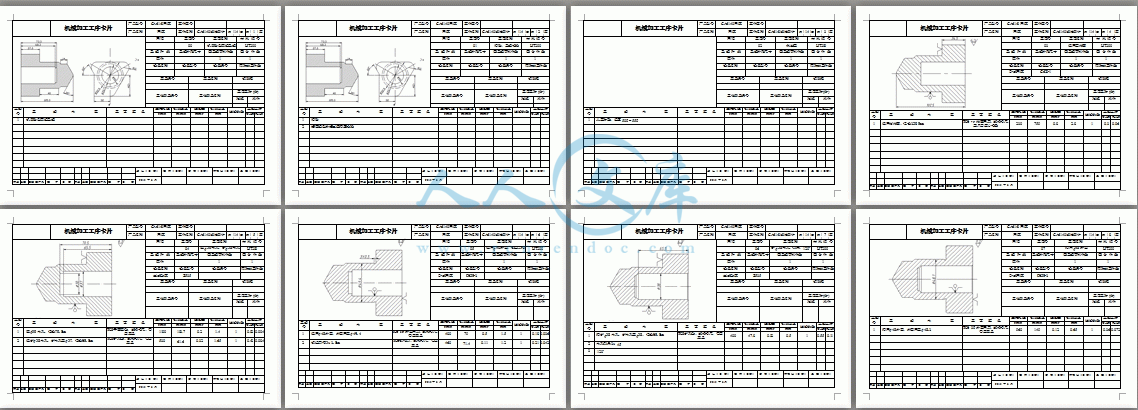
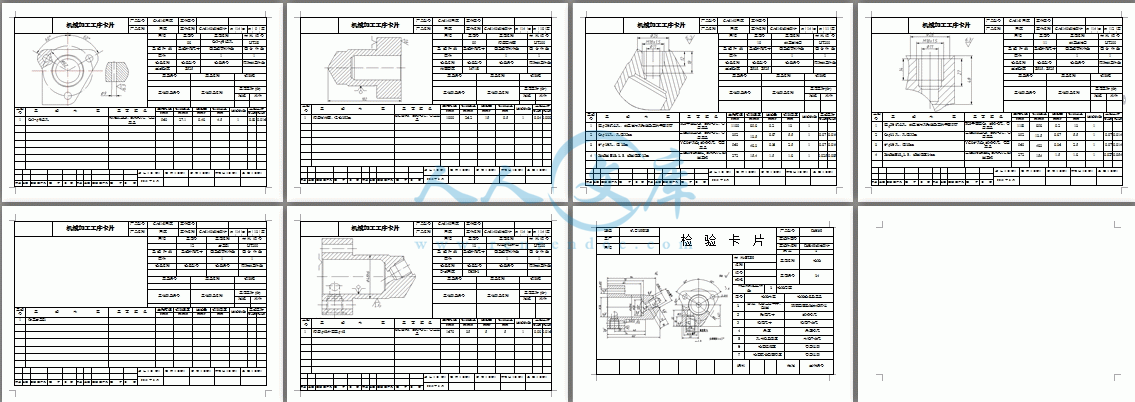




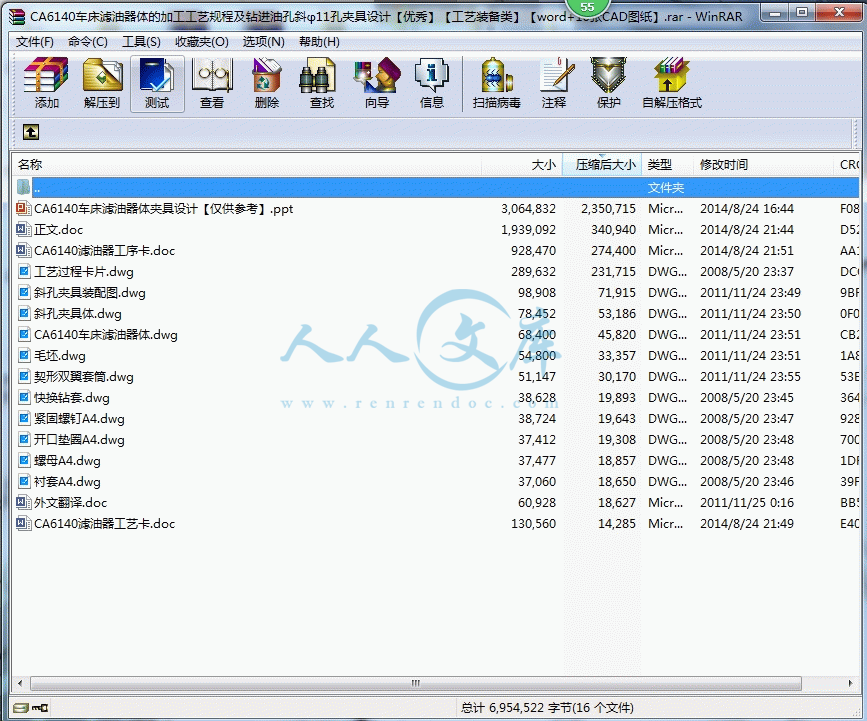


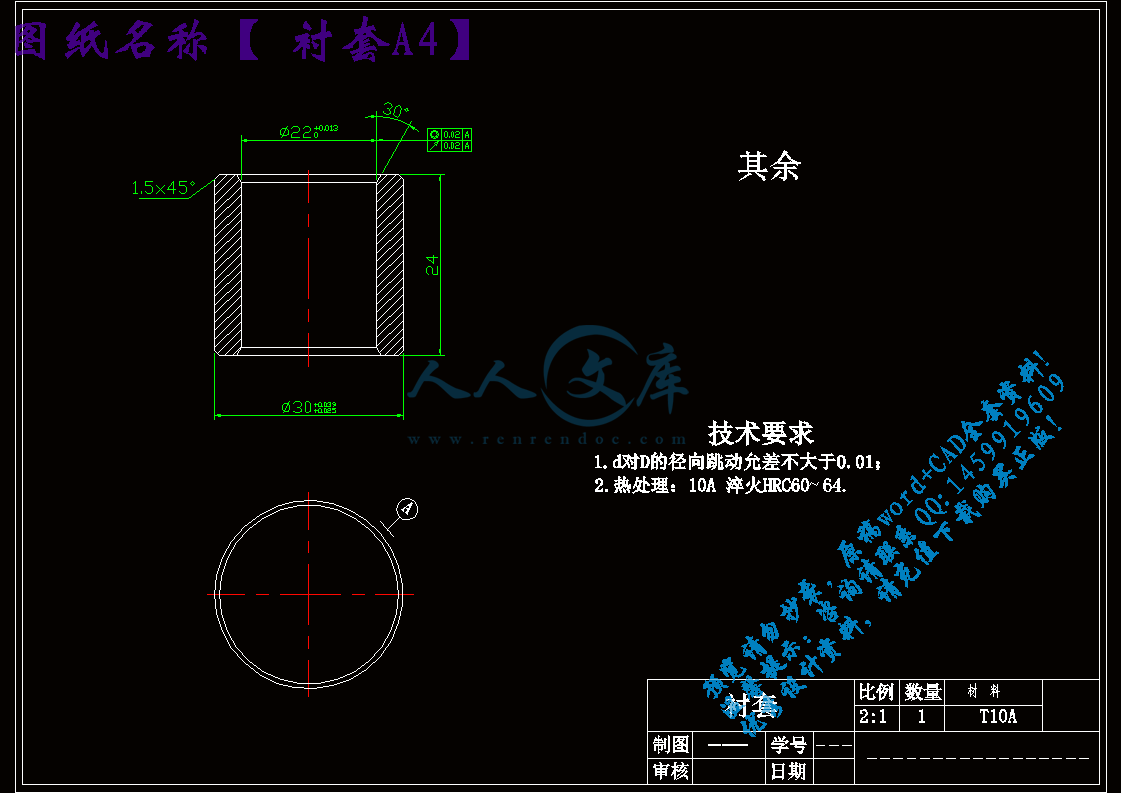

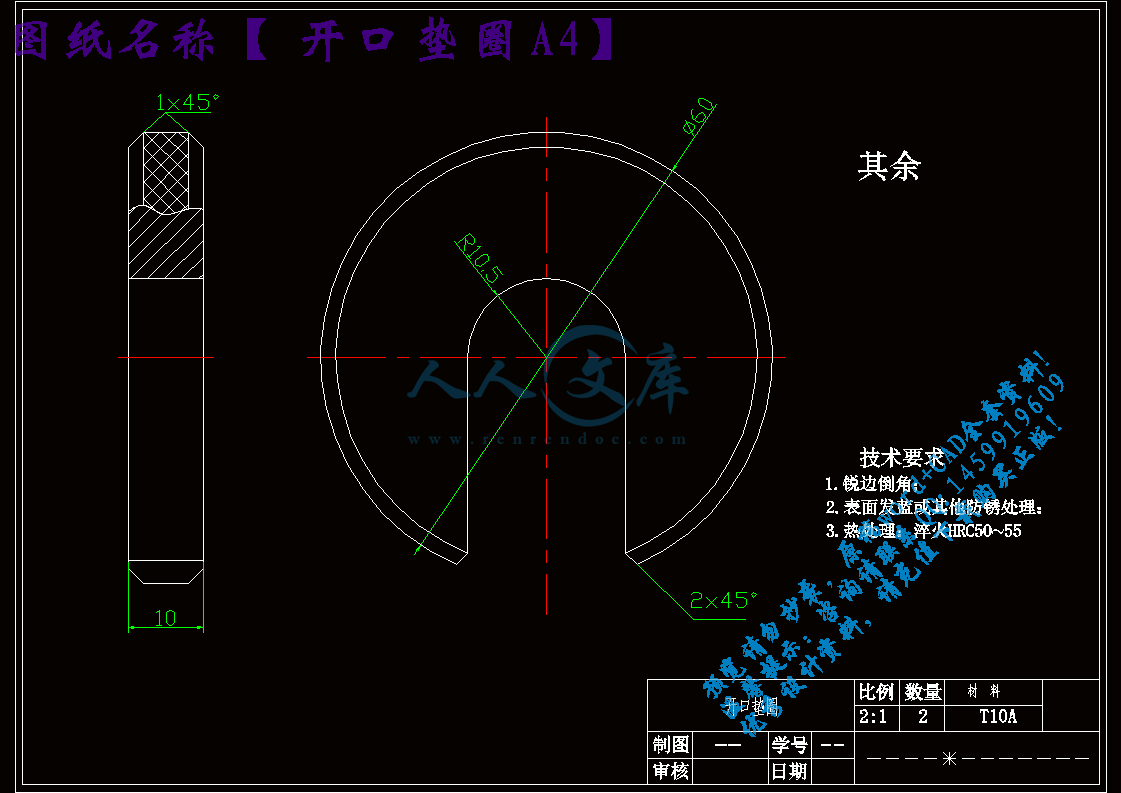




 川公网安备: 51019002004831号
川公网安备: 51019002004831号